龙,与文明共生,与历史同游,与中国同兴,是智慧、力量、刚健、威严的象征。北京历史底蕴深厚,栖居着不少享誉中外的龙。在甲辰龙年,又怎能错过“与龙共舞”的机会?不妨让我们环绕独有壮美的中轴线、漫游时尚现代的文旅新地标、徜徉如黛青山和潋滟水光,打卡十个有“龙”出没的景点地标吧!
The Chinese Dragon, or “loong”, embodies wisdom, strength, vitality, and dignity. It has been an integral part of Chinese civilization since ancient times, flourishing alongside the nation’s development and growth. Beijing, with its rich historical heritage, is renowned for its many dragons celebrated both within China and internationally. During the Year of the Dragon, you won’t want to miss the chance to encounter these mythical creatures. Join us on a tour along Beijing’s distinctive and majestic central axis, where we will uncover trendy cultural and tourism spots, wander through verdant mountains and glistening waters, and explore ten landmarks where “dragons” are said to roam!
1.北海公园:九龙壁上究竟有多少龙?
Beihai Park: How many dragons can you count on the Nine-Dragon Wall?

九龙壁 Nine-Dragon Wall
北京中轴线以西,坐落着中国现存建园最早、保存最完整的皇家园林——北海公园,拥有中国唯一一座双面九龙壁。九龙壁两面各有九条蟠龙,或从海面腾空而起,或从空中俯身下跃,飞腾戏珠于波涛云际之中,栩栩如生,气势非凡。
To the west of Beijing’s central axis lies Beihai Park, China’s oldest and most well-preserved imperial garden. It is home to the country’s only double-sided Nine-Dragon Wall. Each side of the wall is adorned with nine coiling dragons, either soaring from the sea or diving from the sky, engaging in a playful dance with a pearl amidst waves and clouds. They are depicted with lifelike vividness and a powerful presence.
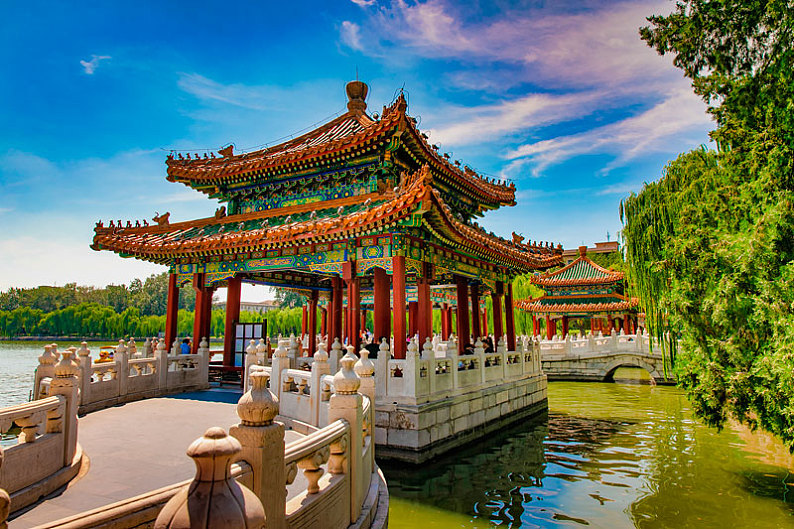
五龙亭 Five Dragon Pavilions
北海公园九龙壁之西即阐福寺,寺前即五龙亭。五个亭子由石桥与白玉石栏杆相连,错落有致地跨在水面之上,宛如巨龙,故称其为“龙亭”。
To the west of the Nine-Dragon Wall in Beihai Park is the Chanfu Temple, and in front of the temple are the Five Dragon Pavilions. The five pavilions are interconnected by stone bridges and white marble railings, elegantly arrayed across the water’s surface, resembling a giant dragon, hence their name “Dragon Pavilions”.
2.故宫:世界上含龙量最高的地方
The Forbidden City: The place in the world with the highest concentration of Chinese Dragons

故宫角楼 Turret of the Forbidden City

太和殿 Hall of Supreme Harmony
漫步至北京中轴线中心,故宫可能是世界上拥有龙最多的一处地方!以紫禁城规格最高、最重要的大殿——太和殿为例,就约有13000多只形态各异龙腾飞于殿宇之间。从黄色琉璃瓦的屋顶看去,有生性喜欢吞火的螭吻(龙吻)作为辟火神兽驻扎在屋脊之上,密布于木质结构的金龙在阳光下流光溢彩、美轮美奂,下雨时底座之上的龙形螭首会呈现“千龙吐水”的奇观……可谓是从上至下,从金至石都布满了龙的存在。
As you stroll towards the heart of Beijing’s central axis, the Forbidden City may well be the place in the world with the highest concentration of Chinese dragons! Take, for example, the Hall of Supreme Harmony, the most important and grandest hall in the Forbidden City, which is home to over 13,000 soaring dragons. Gazing at the yellow glazed-tile roofs, you will spot the chiwen (a mythical creature with a dragon head and a fish body)—known for its love of devouring fire—perched atop the ridges. The golden dragons adorning the wooden structures shimmer and glow in the sunlight, presenting a dazzling spectacle. When it rains, the dragon-shaped chiwen atop the bases create the marvel of “a thousand dragons spitting out water”. It is clear that from the highest point to the lowest, and from the gilded details to the stonework, the presence of dragons is pervasive.
3.颐和园:龙得巢乃栖于此
The Summer Palace: A haven for dragons to dwell

颐和园 The Summer Palace

龙纹和玺彩画 Dragon motifs and multicolored paintings
天一生水,地六成之,是灵气汇聚之地。古时认为,颐和园位于北京的乾位,临近玉泉山,园内有亭台楼阁石桥连接大地,正合天地之数,龙最有可能在此栖居。乾隆二十年,乾隆皇帝在颐和园广润祠祈雨,当晚甘霖从天而降。除了颇具神秘色彩的传说,东宫门的井字团龙天花、绘金龙和玺彩画,颐和园内排云殿、佛香阁建筑群的龙凤雕版、龙纹石刻等龙元素为“寻龙”更添趣味。
The Summer Palace is a sanctuary where the vital forces of heaven and earth meet. It is thought to be situated in the Qian (Heavenly) position of Beijing, close to Yuquanshan (lit. Jade Spring Hill). The park’s pavilions, towers, and stone bridges, which symbolically connect to the earth, are in harmony with the cosmic patterns, making it a favored dwelling for dragons. During the 20th year of Emperor Qianlong’s reign (1755), he sought rain at the Guangrun Shrine within the Summer Palace. And that very night, a beneficial downpour answered his prayers. Beyond this enigmatic tale, the East Gate of the Summer Palace boasts a ceiling pattern with coiling dragons, while the golden dragons and imperial seals painted on the halls add to the charm of the “dragon-seeking” tour. Moreover, the intricate dragon and phoenix carvings and stone carvings with dragon patterns at the Hall of Dispelling Clouds (Paiyun Dian) and the Tower of the Fragrance of the Buddha (Foxiang Ge) complex within the Summer Palace deepen the tour’s enjoyment.
4.天坛:福运连连,龙行昌顺
The Temple of Heaven: A journey of fortune along the propitious dragon

祈年殿 The Temple of Heaven

九龙柏 Nine-dragon Cypress
天坛是世界上现存最大的古代祭天建筑群,承载着中国古人天圆地方、敬畏自然的宇宙观,人与天在此沟通对话。作为王权天赐的象征,其中必然有大量的龙元素存在。
The Temple of Heaven stands as the largest extant ancient complex dedicated to celestial sacrifices, reflecting the ancient Chinese cosmological view of a round heaven and a square earth, and a reverence for nature where dialogue between humans and the celestial happens. As a symbol of divinely ordained imperial rule, it is replete with dragon imagery.
祈年殿的天花板是精致的九龙藻井,与之相应的平面圆形大理石面上是自然形成的龙凤花纹,叫龙凤石。在皇穹宇西墙外,有一棵历经五百余年风雨的古树。青针翠叶、虬枝铜柯,仿佛九条龙在云端飞舞,因此得名“九龙柏”。
The Hall of Prayer for Good Harvests is embellished with a magnificent nine-dragon domed ceiling, while the corresponding flat circular marble floor boasts naturally occurring dragon and phoenix patterns, known as the Dragon-Phoenix Stone. Beyond the west wall of the Imperial Vault of Heaven stands an ancient tree that has braved the elements for more than five centuries. Its verdant needles, rich foliage, gnarled branches, and robust bark mimic nine dragons cavorting amidst the clouds, giving it the moniker “Nine-Dragon Cypress”.
5.香山公园:龙深山色,共“香”盛举
Xiangshan Park (Fragrant Hills): Where dragons roam in the heart of the mountains
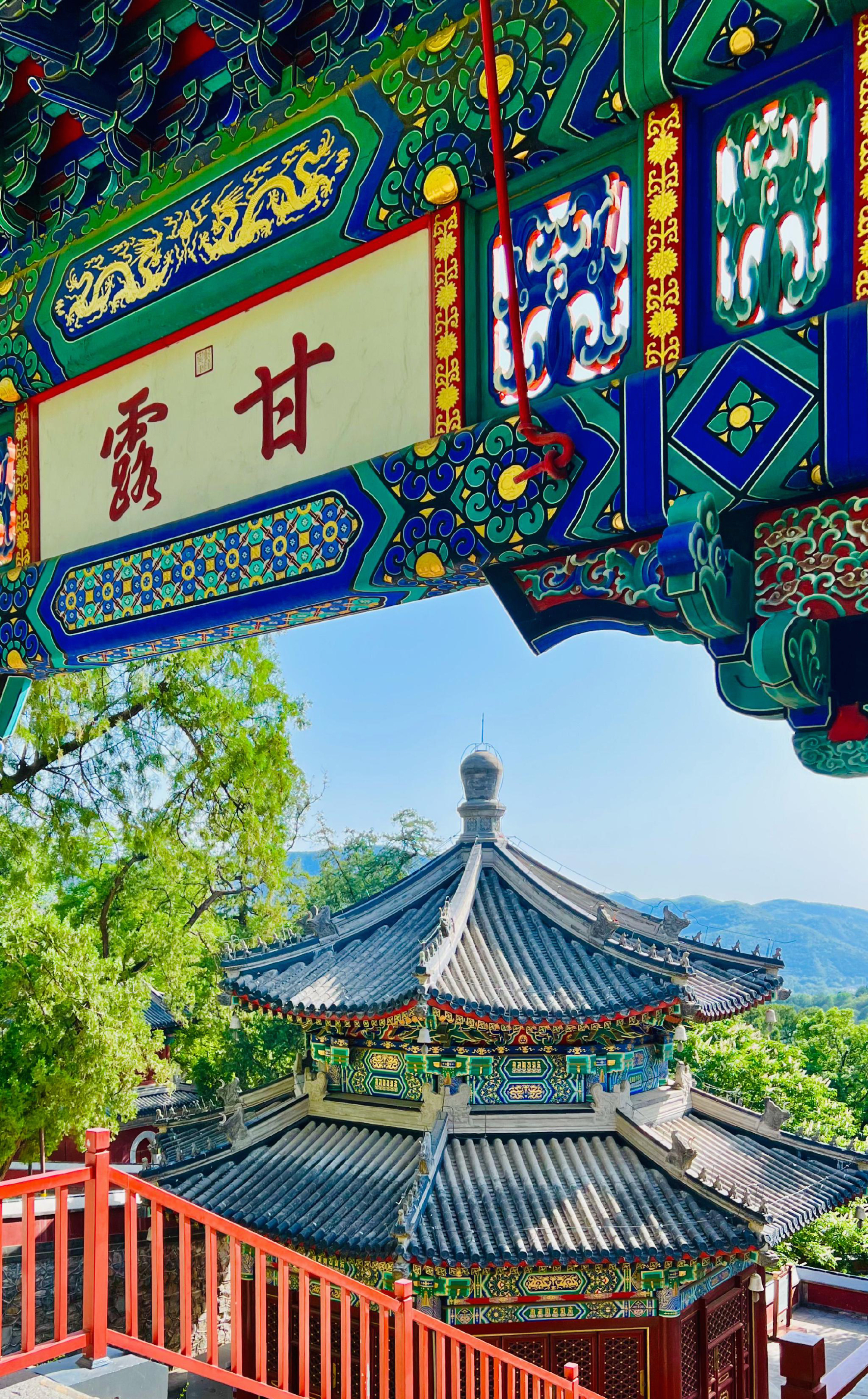
香山公园 Xiangshan Park

勤政殿 Qinzheng Hall
勤政殿为香山二十八景之首,是清代皇帝在香山静宜园驻跸期间,处理朝政和接见王公大臣的场所。大殿彩画采用金龙和玺,殿内匾额、屏风、五屏金漆龙椅、蟠龙香筒和香炉等,均遍布龙纹龙饰。随处可见的龙元素,彰显着皇家园林的恢弘气势。
Xiangshan Park is home to Qinzheng Hall, which is the first of the twenty-eight scenic spots of Xiangshan. It was where Qing Dynasty emperors managed state affairs and met with princes and ministers while staying at Jingyi Garden in Xiangshan. The hall is adorned with colorful paintings featuring golden dragons and imperial seals. Inside, dragon motifs are prominently displayed on plaques, screens, the five-panel golden lacquered dragon throne, coiling dragon incense burners, and censers, underscoring the garden’s imperial majesty.
在香山半山的昭庙之中,彩色琉璃坊和碑亭均饰有龙纹图案、雕刻等,金碧辉煌,生动精美。依山势迭起的香山寺,无论是彩画,还是雕刻,或者建筑零部件等,常有龙形,精致秀美。
At the Zhaomiao Temple, situated midway up Xiangshan, the colorful glazed tile archway and stele pavilion are embellished with dragon patterns and carvings, radiating a resplendent and vivid beauty. The Xiangshan Temple, nestled amidst the mountain’s rolling landscapes, is abundant with dragon motifs in its paintings, carvings, and architectural elements, highlighting the temple’s fine and graceful artisanship.
6.什刹海:水不在深,有龙则灵
Shichahai: Where dragons dwell, even shallow waters gain spirit
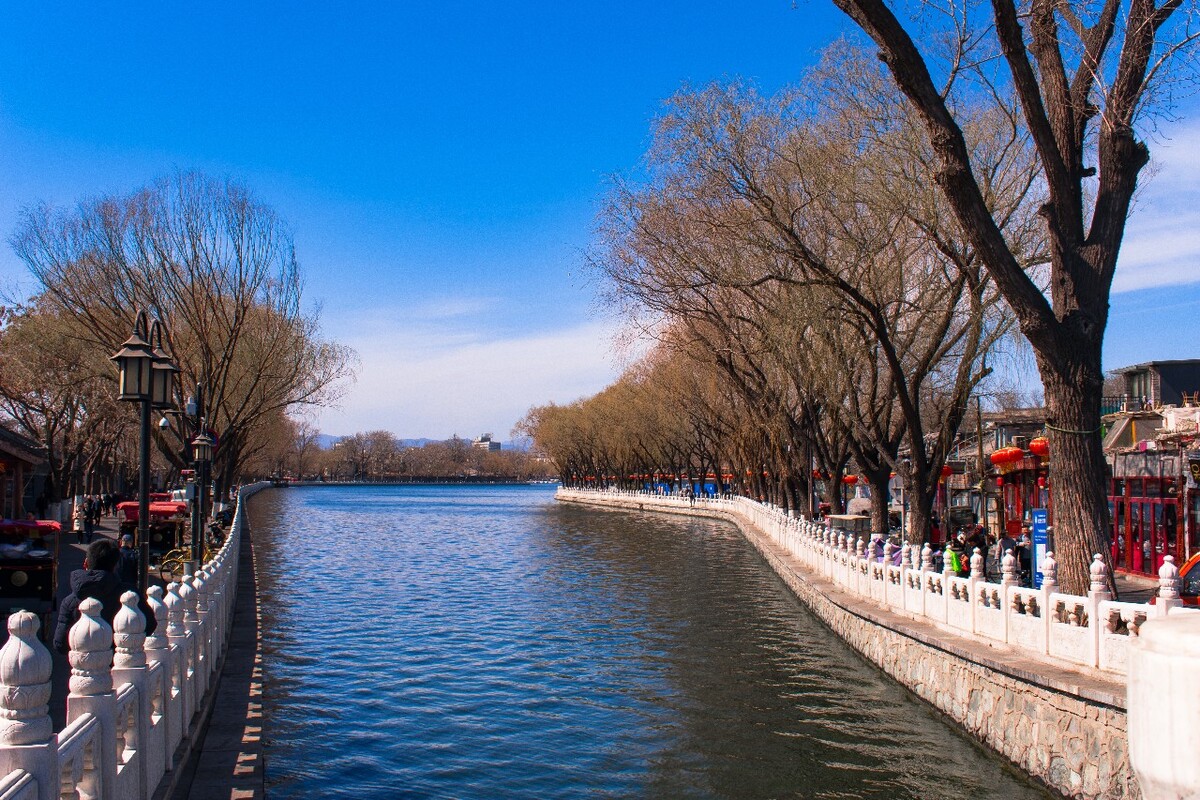
什刹海 Shichahai
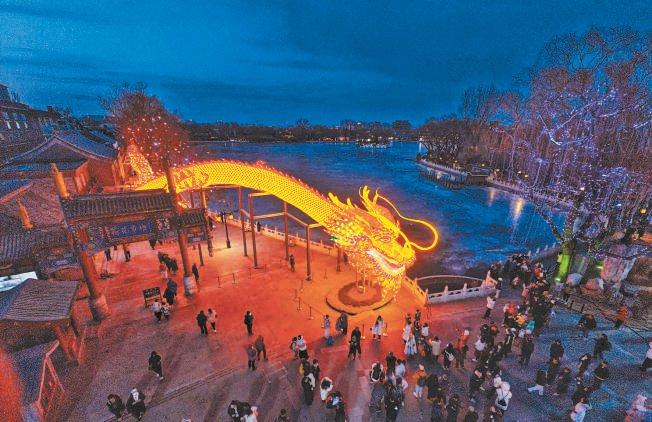
巨型龙灯 The giant dragon lantern
什刹海是北京内城一处具有开阔水面的开放型景区,也是北京城内面积最大、风貌保存最完整的一片历史街区,毗邻北京城中轴线。在什刹海展出着一盏名为“蛟龙出海”的巨型龙灯,全长202.4米,寓意“2024龙腾四海”。它巧妙地将传统彩灯艺术与现代科技光效相结合,造型霸气,尤其是金红色龙头上的长须飘逸,栩栩如生。
Shichahai is an open scenic area in downtown Beijing with a wide expanse of water, and it is the largest and most well-preserved historical block in the city, adjacent to Beijing’s central axis. Displayed at Shichahai is a massive dragon lantern named “Jiaolong Chuhai” (lit. “The Dragon Emerges from the Sea”), which is 202.4 meters long, with the auspicious meaning of “dragons soaring over the four seas in 2024”. It skillfully combines traditional colored lantern art with modern lighting technology, showcasing a majestic appearance, especially the long, flowing whiskers on the golden and red dragon head, which are incredibly lifelike.
7.国家雪车雪橇中心:游龙在天,翱翔九霄
The National Sliding Center: Dragon soaring to the ninth heavens


被称为“雪游龙”的国家雪车雪橇中心
The National Sliding Center (known as the “Snow Dragon”
国家雪车雪橇中心是中国国内第一条、也是唯一一条符合冬奥会标准的雪车雪橇赛道,在2022年北京冬奥会期间承担了雪车、钢架雪车和雪橇三个项目的全部比赛。赛道全长1975米,高差121米,依山就势,如卧龙一样盘踞在山脊之上。“雪游龙”的设计灵感来源于中国传统文化元素“如意”,寓意吉祥如意。
The National Sliding Center is the first and only bobsleigh and luge track in China that meets Olympic Winter Games standards. During the 2022 Beijing Winter Olympics, it hosted all the bobsleigh, skeleton, and luge events. The track measures 1,975 meters in length with a vertical drop of 121 meters, winding through the mountains in a serpentine fashion, resembling a crouching dragon coiled along the ridge. The design of the “Snow Dragon” draws inspiration from the traditional Chinese cultural element “Ruyi”, symbolizing good fortune and prosperity.
8.天安门:“望君归”与“望君出”
Tian’anmen: “Wang Jun Gui” and “Wang Jun Chu”
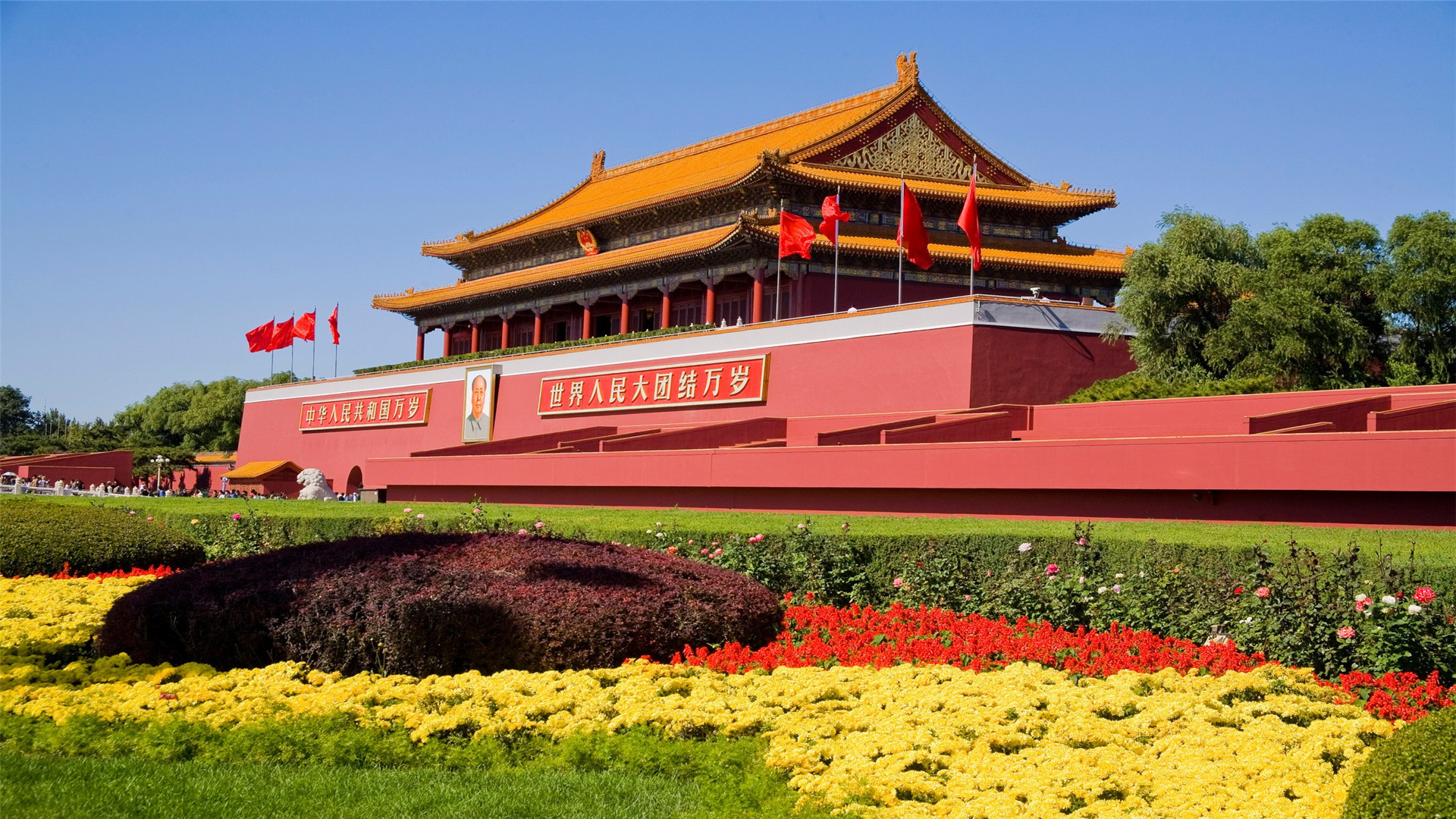
天安门城楼 Tian’anmen Gate Tower

天安门华表上的龙 Dragons on the ornamental columns of Tian’anmen
天安门坐落于首都北京中轴线和长安街的交汇点,是明清两朝皇城正门。天安门前后各有一对汉白玉的柱子,称作华表或“望柱”,上有石犼(蹬龙)蹲立,柱身雕刻云龙。面向宫外的石犼叫“望君归”,意为盼望皇帝外出游玩不要久久不归,应快回宫料理国事;面向宫内的石犼叫“望君出”,劝戒皇帝不要老待在宫内寻欢作乐,应常到宫外去了解百姓的苦难。它们和天安门前的石狮以及两侧的金水桥一起烘托着北京这座皇城的威严气势。
Tian’anmen is located at the intersection of Beijing’s central axis and Chang’an Avenue, serving as the main gate of the imperial city during the Ming (1368-1644) and Qing (1644-1912) dynasties. In front of and behind Tian’anmen stand pairs of marble columns known as huabiao, or “watching columns”, each crowned with a stone creature known as a denglong, or stone hound, which appears to be crouching. These columns are adorned with intricate cloud dragon carvings along their lengths. The stone hounds that face outward are named “Wang Jun Gui”, a term that expresses the hope for the emperor’s safe return. They represent the wish that when the emperor journeyed outside the palace, he would not tarry but would instead hasten his return to attend to the affairs of the state. Conversely, the stone hounds that face inward are known as “Wang Jun Chu”, symbolizing the hope that the emperor would venture forth from the palace. This serves as a gentle reminder for the emperor to venture beyond the palace walls and connect with his people, understanding their hardships. In concert with the stone lions that guard the entrance to Tian’anmen and the Golden Water Bridges that span either side, these elements contribute to the stately grandeur of Beijing as the capital of China, reflecting its rich history and cultural significance.
9.中国考古博物馆:龙文化主题文物展之“最”
Chinese Archaeological Museum: The pinnacle of Chinese dragon culture themed artifact exhibition

中国考古博物馆 Chinese Archaeological Museum

二里头遗址绿松石龙形器 Turquoise dragon-form artifact from Erlitou site
中国考古博物馆地处北京奥林匹克公园核心区,以考古出土文物和珍贵古籍文献为依托,打造北京城市中轴线上的历史文化客厅和展示中华文明的国家窗口。
The Chinese Archaeological Museum is strategically located in the heart of the Beijing Olympic Park. It serves as a historical and cultural meeting place on Beijing’s central axis and as a national window showcasing the civilization of China, drawing on a collection of archaeological treasures and invaluable ancient texts.
2024年,中国考古博物馆联合22家考古文博单位共同推出“龙·中华民族的图腾——中国八千年龙文化精品文物展”。其中展出的二里头文化的杰出代表——绿松石龙形器,由2000余片各种形状的细小绿松石组成,形象生动,色彩绚丽。其用工之巨、制作之精、体量之大在我国早期龙形象文物中十分罕见,是中国龙形象演化进程的关键节点。
In 2024, the Chinese Archaeological Museum, in collaboration with 22 archaeological and cultural heritage institutions, launched the “Dragon: The Totem of the Chinese Nation – An Exquisite Collection of 8,000 Years of Chinese Dragon Culture” exhibition. Among the exhibits, the outstanding representative of the Erlitou culture – the Turquoise dragon-form artifact – stands out. It is composed of over 2,000 pieces of variously shaped small turquoise stones, vivid in appearance and brilliant in color. The immense effort invested in its making, the exquisite craftsmanship, and its impressive size are rare among early dragon image artifacts in China, signifying a significant milestone in the evolutionary trajectory of the Chinese dragon imagery.
10.北京市海外文化交流中心文化空间:一展汇集现代生肖龙艺术
Cultural Space of Beijing Overseas Cultural Exchange Center (BOCEC): A collection of modern zodiac dragon art
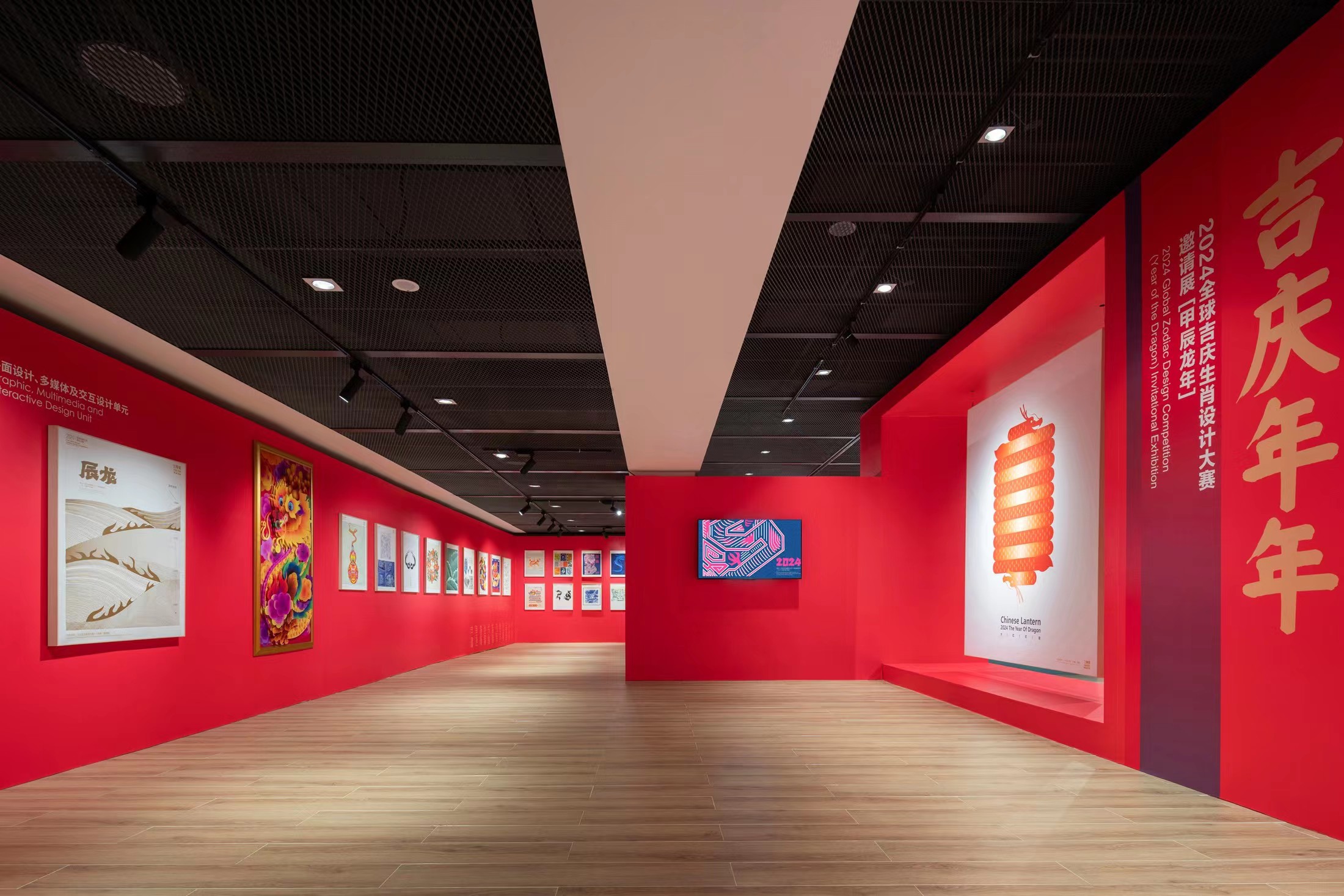
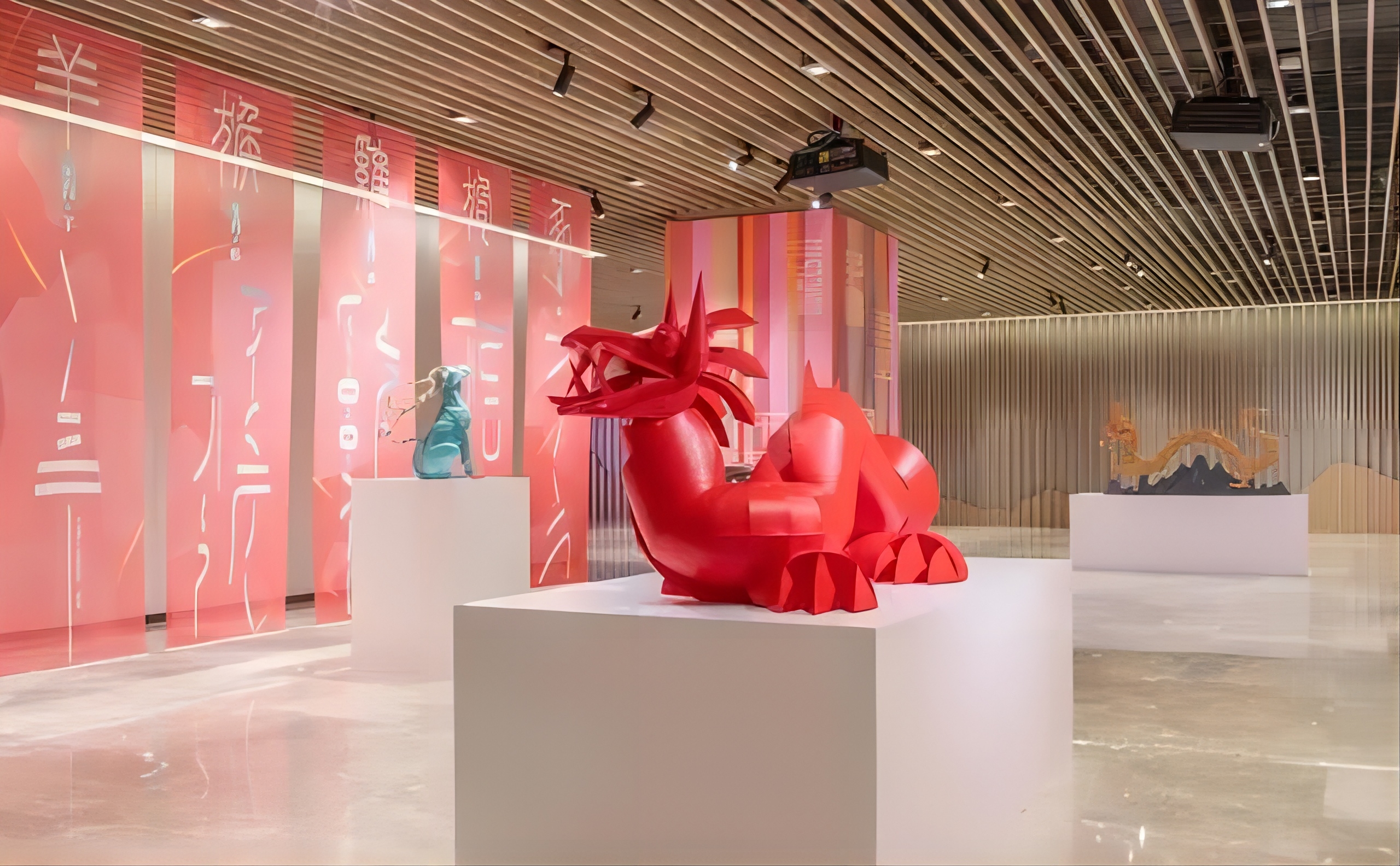
吉庆年年—全球吉庆生肖设计大赛邀请展(甲辰龙年)
正在北京市海外文化交流中心文化空间展出
Year In Year Out: Global Zodiac Design Competition Invitational Exhibition
(Year of the Dragon) now on display at the Cultural Space of BOCEC
在东长安街,有一个值得探寻、体验的综合性国际文化、旅游交流空间——北京市海外文化交流中心。该中心是北京市文化和旅游局所属的事业单位,是北京市综合性对外文化交流及港澳台文化交流的专业机构。
Located on East Chang’an Street, the Beijing Overseas Cultural Exchange Center (BOCEC) is a comprehensive international space for cultural and tourism exchange that is worth exploring and experiencing. Affiliated with the Beijing Municipal Bureau of Culture and Tourism, the center is a professional institution dedicated to Beijing’s cultural exchanges with foreign countries and with Hong Kong, Macao, and Taiwan.
目前,“吉庆年年—全球吉庆生肖设计大赛邀请展(甲辰龙年)”正在空间展出,观众可以在现场欣赏到全球吉庆生肖设计大赛(甲辰龙年)和历届大赛的优秀生肖获奖作品,以及韩美林、陈文令、申红飙等国内艺术家以及墨西哥雕塑家塞巴斯蒂安、旅美华裔雕塑家吴信坤的生肖艺术作品。展览将中国生肖龙与当代创新设计有机结合,以年轻化、时尚化、国际化的表达方式,彰显中国生肖文化的深邃魅力。
The exhibition features outstanding zodiac award-winning works from the Global Zodiac Design Competition (Year of the Dragon) and its previous editions, as well as Chinese zodiac art pieces by renowned Chinese artists Han Meilin, Chen Wenling, Shen Hongbiao, and international artists including Mexican sculptor Sebastian and Chinese-American sculptor Wu Xinkun. The exhibition highlights the seamless fusion of the Chinese zodiac dragon with cutting-edge contemporary design, conveying the deep allure of Chinese zodiac culture in a vibrant, fashionable, and international manner.
龙年寻龙,欢迎大家来到北京这座“龙”味十足的城市,共赴一场诚意满满的“寻龙之旅”,领略北京独具魅力的传统文化!
In the Year of the Dragon, come to Beijing, a city steeped in “dragon” spirit, and embark on a thrilling “dragon-seeking tour” to delve into the city’s distinctive and enchanting traditional culture!